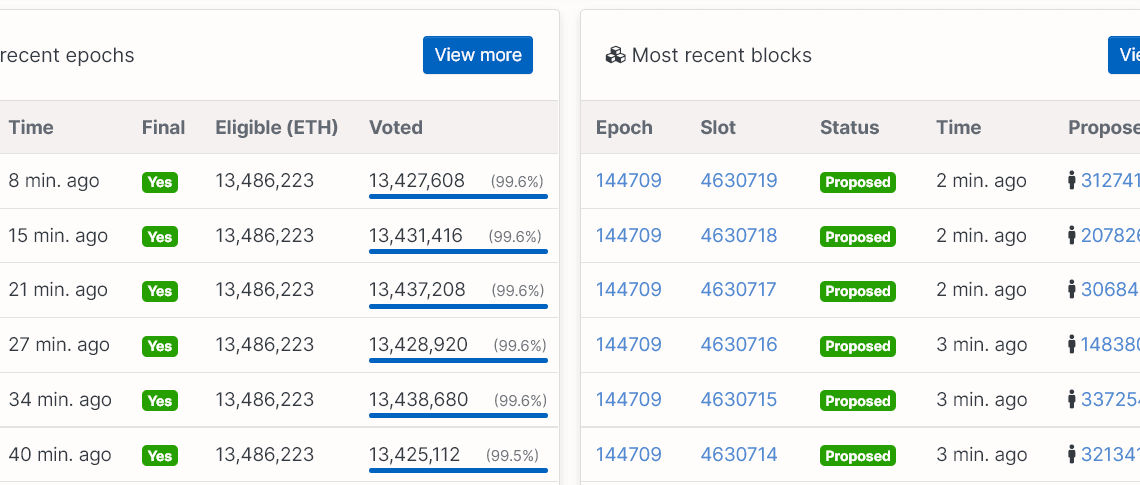[the_ad id="1637"]
[ad_1]
The assumption that Ethereum will just transition to a fully functional proof-of-stake (PoS) network after the Merge somewhat ignores the risk and effort necessary to move an asset that has a $193 billion market capitalization and 400 decentralized applications (DApps).
That is precisely why monitoring vital network conditions is essential for anyone willing to trade the event which is scheduled for Sept. 14, according to ethernodes.org. More importantly, traders should be prepared to detect any alarming developments in case things go wrong.
Apart from the $34.2 billion in total value locked in smart contracts, another $5.3 billion in Ether is staked on the Beacon Chain. The network is currently used by many tokens, oracle providers, stablecoins, layer-2 scalability solutions, synthetic assets, nonfungible items (NFT), decentralized finance (DeFi) applications and cross-chain bridges.
This partially explains why the Merge has been postponed multiple times through the years and why it is deemed to be the most significant upgrade in the history of the network.
For this reason, three different testnets have undergone the Merge, with Goerli being the latest on Aug. 11. Curiously, minor issues were presented on all testnet implementations, including Ropsten and Sepolia. For instance, Ethereum developer Marius van der Wijden noted that “two different terminal blocks and lots of non-updated nodes” slightly slowed the process down.
The core of any blockchain network are its blocks
It doesn’t matter what the consensus mechanism is. All blockchains rely on new blocks being proposed and validated. There are established block parameters that must be followed even to be considered by the network participants.
In the case of the Ethereum Merge, an epoch is a bundle of up to 32 blocks that should be attested within six and a half minutes. Actively monitoring the ETH2 Beacon Chain Mainnet from reputable sources like BeaconScan by Etherscan and Ethscan ETH2 Explorer by Redot is important.
Red flags on this monitor would be low voting participation on the epochs, the lack of finality after thirteen minutes (2 epochs) or a grind halt on proposed blocks.
Monitoring Infura’s Ethereum 2.0 API
Infura provides infrastructure for building decentralized applications, allowing developers to deploy their solutions without hosting their own full Ethereum node. The company is fully owned by Ethereum venture capital group…
Click Here to Read the Full Original Article at Cointelegraph.com News…
[ad_2]
[the_ad id="1638"]
